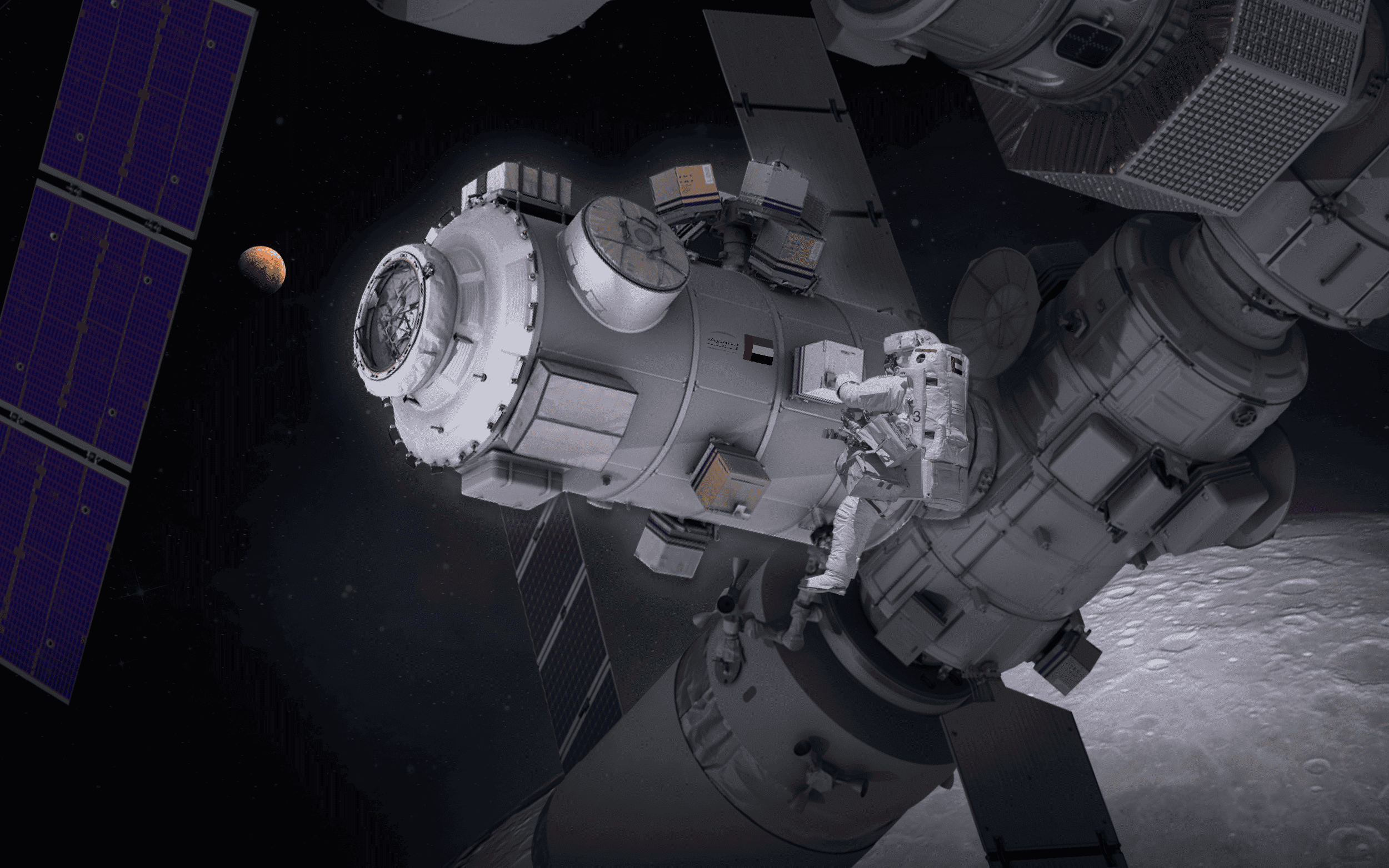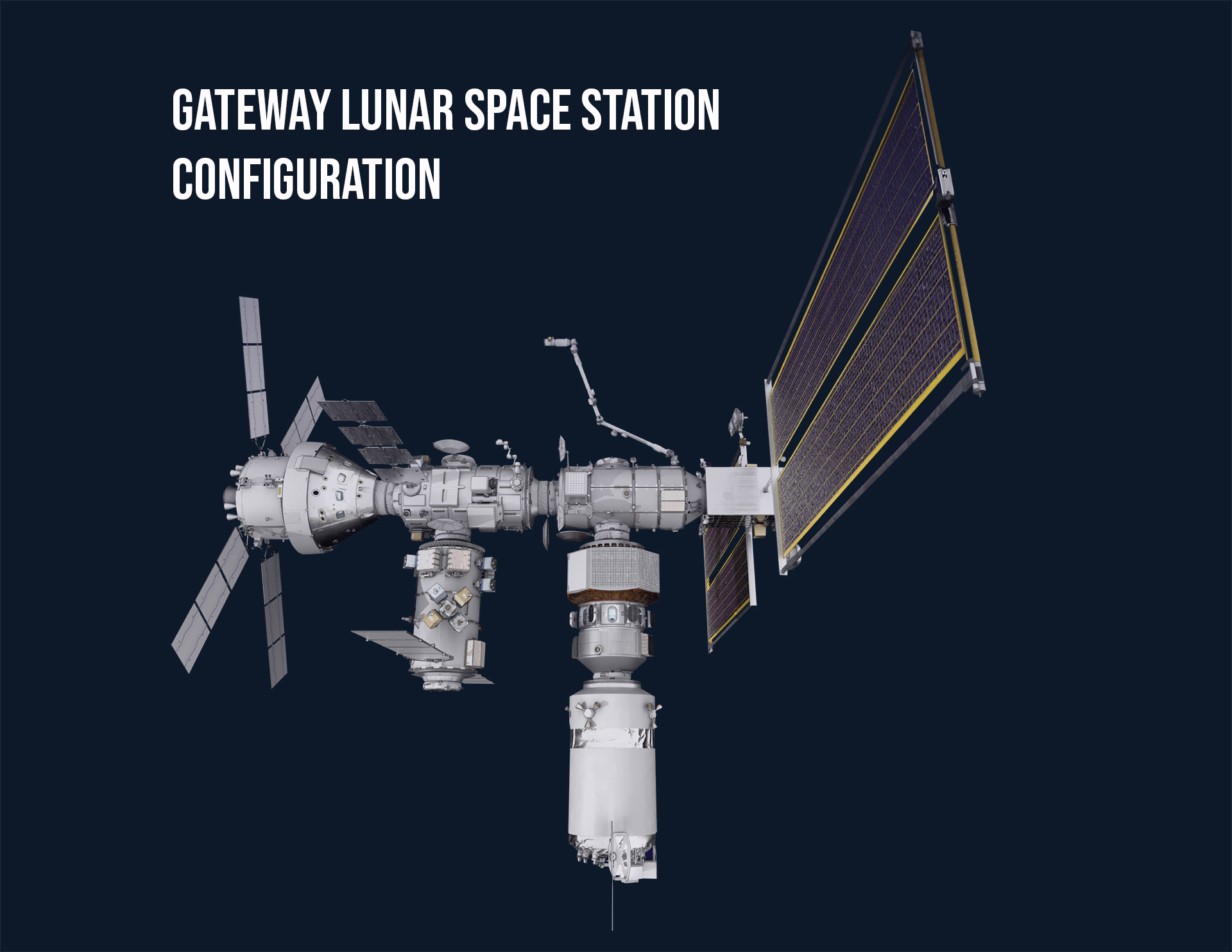Emirates Airlock
The Gateway lunar space station will be the first space station to orbit the Moon. Built in collaboration with international and commercial partners, it will support long-duration astronaut missions, improve communication with the lunar surface, and provide vital research on solar and cosmic radiation. As a crucial component of lunar exploration and future Mars missions, the Gateway will expand human presence in space.
The UAE will be at the forefront of the Gateway lunar space station, developing and operating the Emirates Airlock, the crew and science airlock module. This critical component will allow astronauts to perform spacewalks, transfer research and crew to and from the station, and serve as an additional docking port for spacecraft. This involvement will establish the UAE as a key partner in future space missions, contributing to space exploration and fostering knowledge sharing.
Strategic Importance to the UAE Space Sector
- The UAE will have priority access to advanced scientific and engineering data gathered from the station.
- It will be among the first nations to send an astronaut to the Moon.
- It will also contribute scientifically to the largest programme for Moon and Mars exploration.
Phases of the Emirates Airlock Project
Planning Stage: Establish management and operational protocols for the airlock.
Design Phase: Develop detailed designs for assembly.
Qualification: Test and ensure the reliability and safety of the airlock.
Flight Preparation: Prepare and launch the airlock components to the Gateway lunar space station.
Operations Stage: MBRSC will manage and operate the airlock as part of the station.

The Importance of the Gateway Lunar Space Station
-

Future Portal for Scientific Exploration:
The Gateway will serve as a central hub for cutting-edge research, studying lunar geology, astrophysics, and human space exposure, advancing our understanding of space sciences.
-

Station for Moon and Mars Missions:
The Gateway will play a vital role in Moon and Mars missions, acting as a platform for assembly, refueling, and launching long-term expeditions, thus enhancing the efficiency and stability of these missions.
-

Smoother Long-Term Operations:
With an initial operational term of 15 years, extendable based on research needs, the station will support continuous exploration, ensuring the longevity of space travel and planetary research.
-

Extended Astronaut Habitation:
The station will accommodate astronauts for up to 90 days, facilitating extensive lunar exploration and research, and paving the way for longer-duration space missions.

Orion
Crewed spacecraft that will transport Artemis astronauts between Earth and Gateway, delivering critical modules, including I-HAB, Emirates Airlock, and ESPRIT Refuelling Module (ERM).
Emirates Airlock
Emirates Airlock: Access point between Gateway's pressurised cabin and space for conducting spacewalks, transferring experiments, and docking additional spacecraft, developed by the UAE's MBRSC.
International Habitat (I-HAB)
Crew quarters equipped with life support systems and research tools, provided by the European Space Agency (ESA) and Japan Aerospace Exploration Agency (JAXA).
Habitation and Logistics Outpost (HALO)
Initial crew living quarters featuring life support systems, communications equipment, and environmental control provided by ESA.
ESPRIT Refuelling Module (ERM)
Provided by ESA, the ERM will store fuel to refuel Gateway, provide habitable space, and include large windows for stunning lunar views.
Logistics Module (LM)
Delivers supplies and science experiments to Gateway and provides additional space for research.
Power and Propulsion Element (PPE)
This module will house Gateway’s power systems, including roll-out solar arrays capable of generating 60 kW of electrical power, as well as propulsion and communication systems.
Canadarm3
A next-generation robotic arm provided by the Canadian Space Agency, capable of assisting astronauts, installing experiments, and performing external station inspections.

